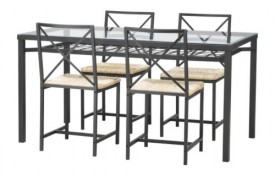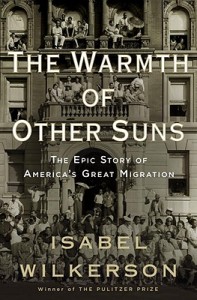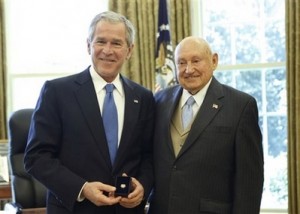…continued from IKEA What?-Part I
We knew that we wanted to go back to IKEA and look deeper at what we would enjoy having in our home: if we saw something that we liked there, we could get it, and if not, we would at least make a fun day of it. I was settled on purchasing new bedroom furniture, or possibly new living room furniture; but, we were pretty much open to anything.
We decided that New Year’s Day would be a perfect day to go. We both had the day off, and they had an annual sale going on that week. We borrowed a friend’s trusty old Suburban (we weren’t going to try and jam whatever we got into our little Saturn…not that we haven’t done things like that before…), and headed off to the Baltimore suburbs around noon.
During the hour-long drive, we got to talking about what we really wanted. We began to lean away from the bedroom and living room furniture, and towards a new kitchen table and chairs. Let’s just say that at the time, our current dining room set had a lot of history behind it; but nothing matched, and it was not the sturdiest thing in the world either.
We arrived at the store, and immediately went to eat at their restaurant. They had a special where you could get fifteen Swedish meatballs, mashed potatoes, a cream sauce/gravy, and Lingonberry jam for $3.99, so we both went for that, and thoroughly enjoyed it.
Afterwards, we went searching. We grabbed our pencil, card, and shopping bag, and headed in. Almost immediately, the first thing that caught our eye was the most interesting and innovative–but simple–tie rack. My ties usually just end up on very generic tie rack, and overflow onto a bent-out-of-shape hanger. This one would clean everything up just how we wanted. One thing about IKEA, which you will find out about more in the next post in this series, is that they are the masters of organization. We grabbed the information on it and continued on…

 Eventually we came to the kitchen and dining area. I think that this is one of their most unique and popular parts of the store. They have a wide selection of kitchen organization solutions, as well as plenty of dining room options. We looked around–back and forth–for about a half an hour, trying to find something that would fit our needs. Neither of us had a clue what we wanted exactly in a dining room set. Their were some very nice sets that were a bit out of our price range, but all together, nothing caught our eye–expensive or inexpensive–like the elegant (did I just write that word?) GRANÅS set of table and chairs. It gave off a little bit of a modern look, without being way out there where it didn’t feel like home. It is has a tempered glass tabletop, sitting on a sturdy black steel frame and legs. One perk is a second lattice style tabletop/shelf underneath the glass that can be used to display decorations without cluttering the eating area (it is kind of difficult to see in the pictures below). The chairs are made from the same simply constructed black steel, but also have a woven cane seating pad, that promotes comfort and styling–plus made it much easier to match with the rest of our kitchen. We were extremely happy with our purchase: it is very well built, and looks great in our home. With the table, we also purchased four place-mats that go well with the set.
Eventually we came to the kitchen and dining area. I think that this is one of their most unique and popular parts of the store. They have a wide selection of kitchen organization solutions, as well as plenty of dining room options. We looked around–back and forth–for about a half an hour, trying to find something that would fit our needs. Neither of us had a clue what we wanted exactly in a dining room set. Their were some very nice sets that were a bit out of our price range, but all together, nothing caught our eye–expensive or inexpensive–like the elegant (did I just write that word?) GRANÅS set of table and chairs. It gave off a little bit of a modern look, without being way out there where it didn’t feel like home. It is has a tempered glass tabletop, sitting on a sturdy black steel frame and legs. One perk is a second lattice style tabletop/shelf underneath the glass that can be used to display decorations without cluttering the eating area (it is kind of difficult to see in the pictures below). The chairs are made from the same simply constructed black steel, but also have a woven cane seating pad, that promotes comfort and styling–plus made it much easier to match with the rest of our kitchen. We were extremely happy with our purchase: it is very well built, and looks great in our home. With the table, we also purchased four place-mats that go well with the set.

We bought a few other things as well, but that will be saved for the last post in the series…


 The Warmth of Other Suns is a detailed historical narrative of the immense migrations of blacks from the rural and agricultural south to the urban and industrial north from 1915-1975. Isabel Wilkerson focuses on three individuals, from three different states, and from three different waves of the migration. Ida Mae Gladney and her sharecropping husband fled Mississippi to settle in Chicago in the 1930’s. George Starling and his wife fled threats of lynchings in central Florida for New York City in the 1940’s. And Robert Foster left the underwhelming prospects of being a colored doctor in a highly segregated Louisiana town to the promising prospects of Los Angeles. Throughout the narrative, the larger history of the Great Migration is filled in, providing a depth that does not leave the reader in the dark concerning the whole of that time period.
The Warmth of Other Suns is a detailed historical narrative of the immense migrations of blacks from the rural and agricultural south to the urban and industrial north from 1915-1975. Isabel Wilkerson focuses on three individuals, from three different states, and from three different waves of the migration. Ida Mae Gladney and her sharecropping husband fled Mississippi to settle in Chicago in the 1930’s. George Starling and his wife fled threats of lynchings in central Florida for New York City in the 1940’s. And Robert Foster left the underwhelming prospects of being a colored doctor in a highly segregated Louisiana town to the promising prospects of Los Angeles. Throughout the narrative, the larger history of the Great Migration is filled in, providing a depth that does not leave the reader in the dark concerning the whole of that time period.







